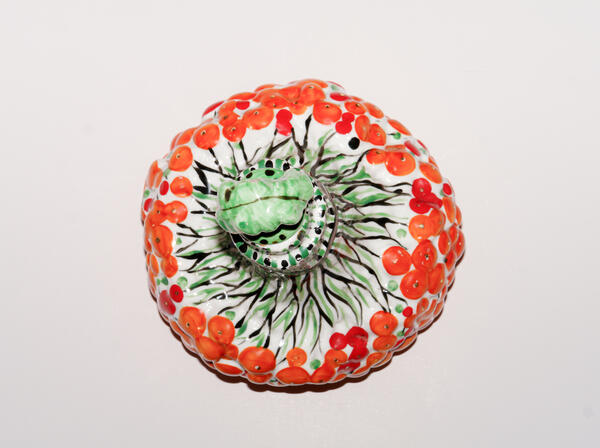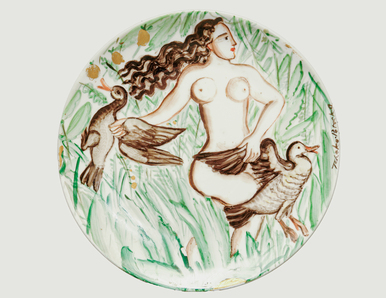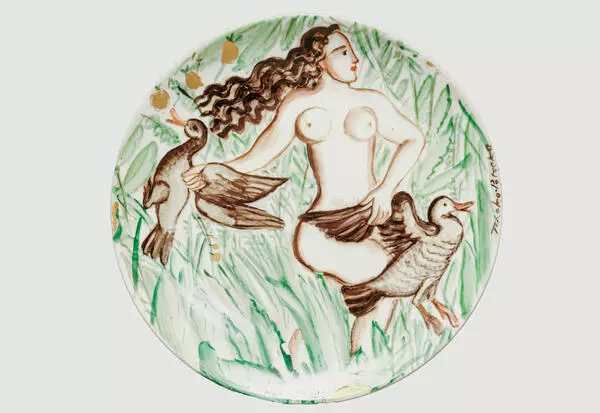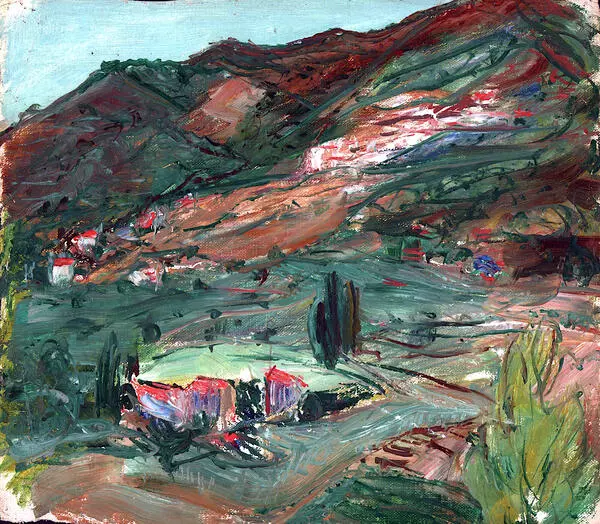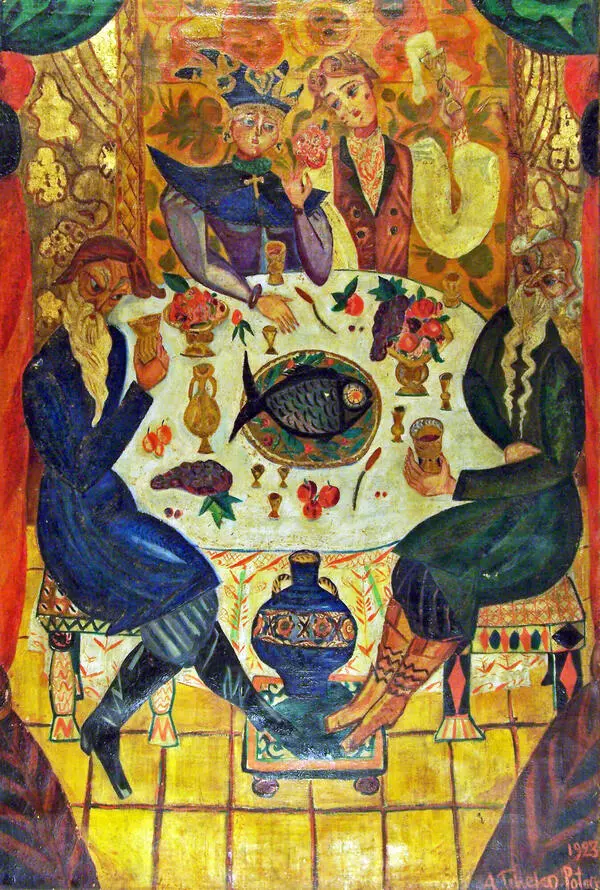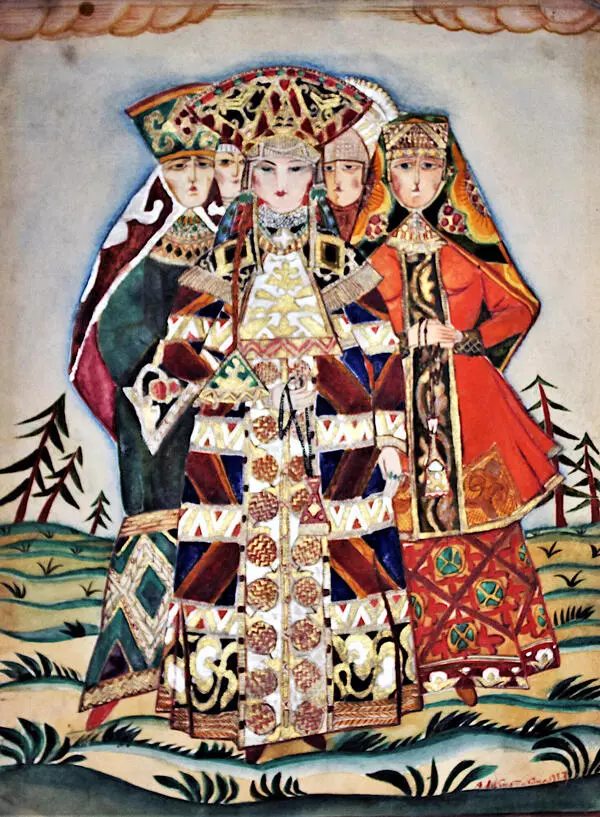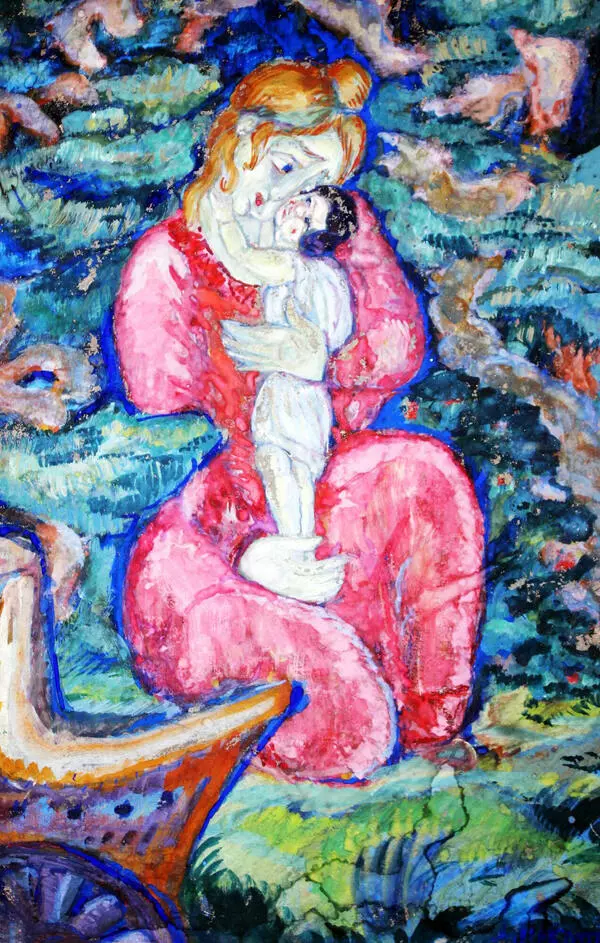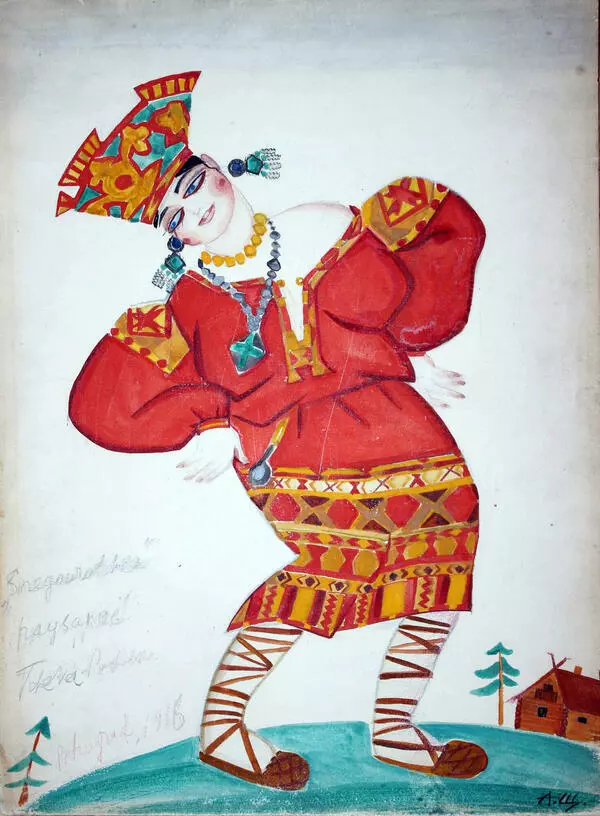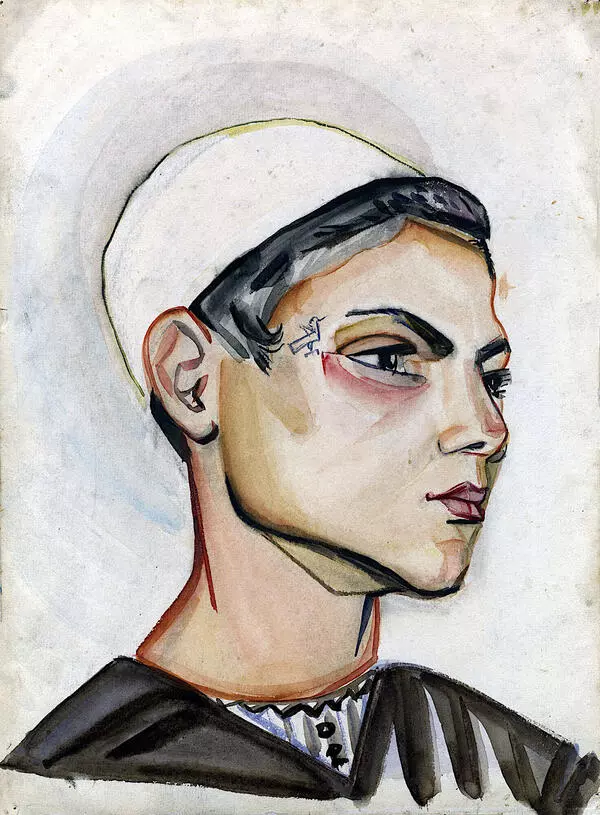The decanter “Mountain Ash” is a work of Alexandra Vasilievna Shchekatikhina-Pototskaya, the wife of the Russian painter Ivan Yakovlevich Bilibin. It was created after her return to her homeland in 1936. Up until the mid-1950s, Alexandra Vasilievna devoted herself entirely to porcelain, endowing into it the magnificence of fine and plastic arts.
Her favorite “characters” — fish, birds, and fruits — seem to come off the surfaces of vases and plates and find their place in real space. Inspired by an ancient tradition, Shchekatikhina-Pototskaya imitates the forms of flora and fauna in various types of her vessels. For instance, there were plates “Lemon” and “Pepper”, the ashtray “Pigeon”, and the liquor set “Mountain-ash”.
When Shchekatikhina-Pototskaya was given the opportunity to cast models at the Leningrad Porcelain Factory, she truly got into sculpting. There was also another dynamic in the artist’s turn to sculptural forms: in her paintings of the 1920s she moved away from a flat, ornamental vision of nature to a picturesque and three-dimensional interpretation of the visible world.
Shchekatikhina manages to combine plastic motifs borrowed from nature with revealing the functional purpose of an item. As a result, such objects are created that cannot be confused with freestanding sculpture, although, of course, this is not ordinary tableware. Her task is to bring a festive feel into everyday life. The shapes of Shchekatikhina’s utilitarian works are full of elasticity. The play of reflections and the inclusion of color into the picturesque texture of surfaces enrich an already luxurious spectacle.
Starting in the late 1940s, the focus of Alexandra Vasilievna’s attention shifts to painting sets of dinnerware intended for mass production. Experiencing her connection with folk art in a new way, the artist becomes more restrained. The décor covering the entire shape of an item acquires classical clarity, and the rich vision of color palette is concentrated in several pure tones, which sound in full force on the unrestricted whiteness of porcelain.
In general, the paintings, porcelain ware, drawings and set design sketches by Shchekatikhina demonstrate the integrity of her worldview, the uniqueness of imaginative thinking, and convincingly display the versatility of the artist that made her a representative of high artistic culture and bright expressive form in the Soviet decorative arts.
Her favorite “characters” — fish, birds, and fruits — seem to come off the surfaces of vases and plates and find their place in real space. Inspired by an ancient tradition, Shchekatikhina-Pototskaya imitates the forms of flora and fauna in various types of her vessels. For instance, there were plates “Lemon” and “Pepper”, the ashtray “Pigeon”, and the liquor set “Mountain-ash”.
When Shchekatikhina-Pototskaya was given the opportunity to cast models at the Leningrad Porcelain Factory, she truly got into sculpting. There was also another dynamic in the artist’s turn to sculptural forms: in her paintings of the 1920s she moved away from a flat, ornamental vision of nature to a picturesque and three-dimensional interpretation of the visible world.
Shchekatikhina manages to combine plastic motifs borrowed from nature with revealing the functional purpose of an item. As a result, such objects are created that cannot be confused with freestanding sculpture, although, of course, this is not ordinary tableware. Her task is to bring a festive feel into everyday life. The shapes of Shchekatikhina’s utilitarian works are full of elasticity. The play of reflections and the inclusion of color into the picturesque texture of surfaces enrich an already luxurious spectacle.
Starting in the late 1940s, the focus of Alexandra Vasilievna’s attention shifts to painting sets of dinnerware intended for mass production. Experiencing her connection with folk art in a new way, the artist becomes more restrained. The décor covering the entire shape of an item acquires classical clarity, and the rich vision of color palette is concentrated in several pure tones, which sound in full force on the unrestricted whiteness of porcelain.
In general, the paintings, porcelain ware, drawings and set design sketches by Shchekatikhina demonstrate the integrity of her worldview, the uniqueness of imaginative thinking, and convincingly display the versatility of the artist that made her a representative of high artistic culture and bright expressive form in the Soviet decorative arts.

